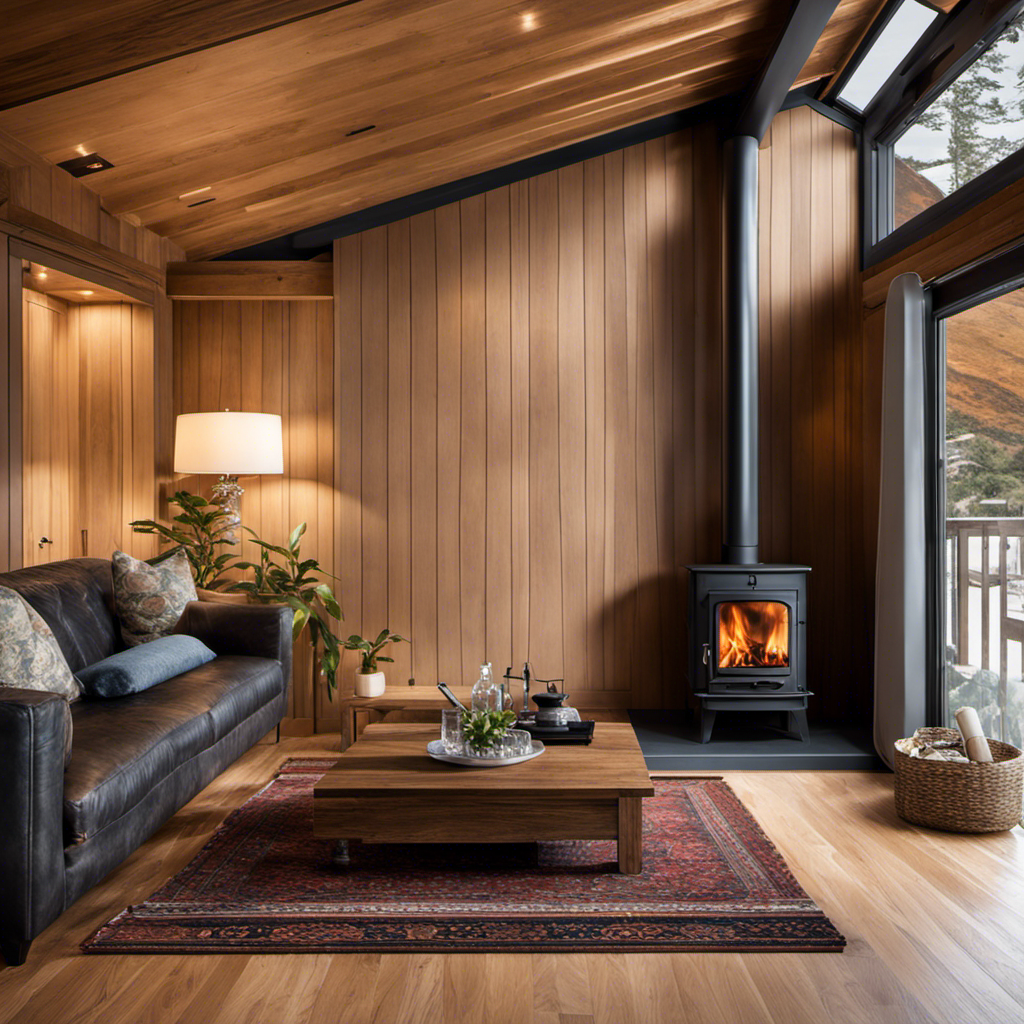I have always desired to create a more cozy atmosphere in my garage, and what better way to accomplish that than by installing a wood stove?
In this guide, I’ll walk you through the step-by-step process of installing a wood stove in your garage.
From assessing the suitability of your space to ensuring proper ventilation, we’ll cover it all.
So grab your tools and let’s get started on transforming your garage into a warm and inviting space.

Key Takeaways
- Assess existing ventilation and install additional vents or fans if necessary
- Choose a wood stove that is the appropriate size and has safety features
- Prepare the garage by ensuring proper insulation and sealing gaps and cracks
- Follow a step-by-step guide for proper installation and consider the layout for optimal heat distribution
Assessing the Suitability of Your Garage for a Wood Stove
I’m evaluating if my garage is suitable for a wood stove. When it comes to assessing ventilation, it’s crucial to ensure that your garage has adequate airflow. A wood stove requires proper ventilation to function safely and efficiently. Start by checking the existing ventilation in your garage. Look for windows or vents that can be opened to allow fresh air to enter and stale air to exit. If your garage lacks sufficient ventilation, it may be necessary to install additional vents or fans to ensure proper airflow.
Fire safety is of utmost importance when installing a wood stove in your garage. Begin by inspecting the walls and ceiling for any cracks or damage that could potentially lead to a fire hazard. Ensure that the walls are made of non-combustible materials such as concrete or brick. Additionally, keep flammable materials and fuels away from the stove to prevent accidental fires. It’s also essential to have a fire extinguisher nearby and to regularly check its expiration date and functionality.
Choosing the Right Wood Stove for Your Garage
When selecting the perfect wood stove for my garage, it’s important to consider factors like size, efficiency, and safety features. Here are some key points to keep in mind:
Size: The size of the wood stove should be appropriate for the size of the garage. It should be able to heat the space efficiently without overpowering it.
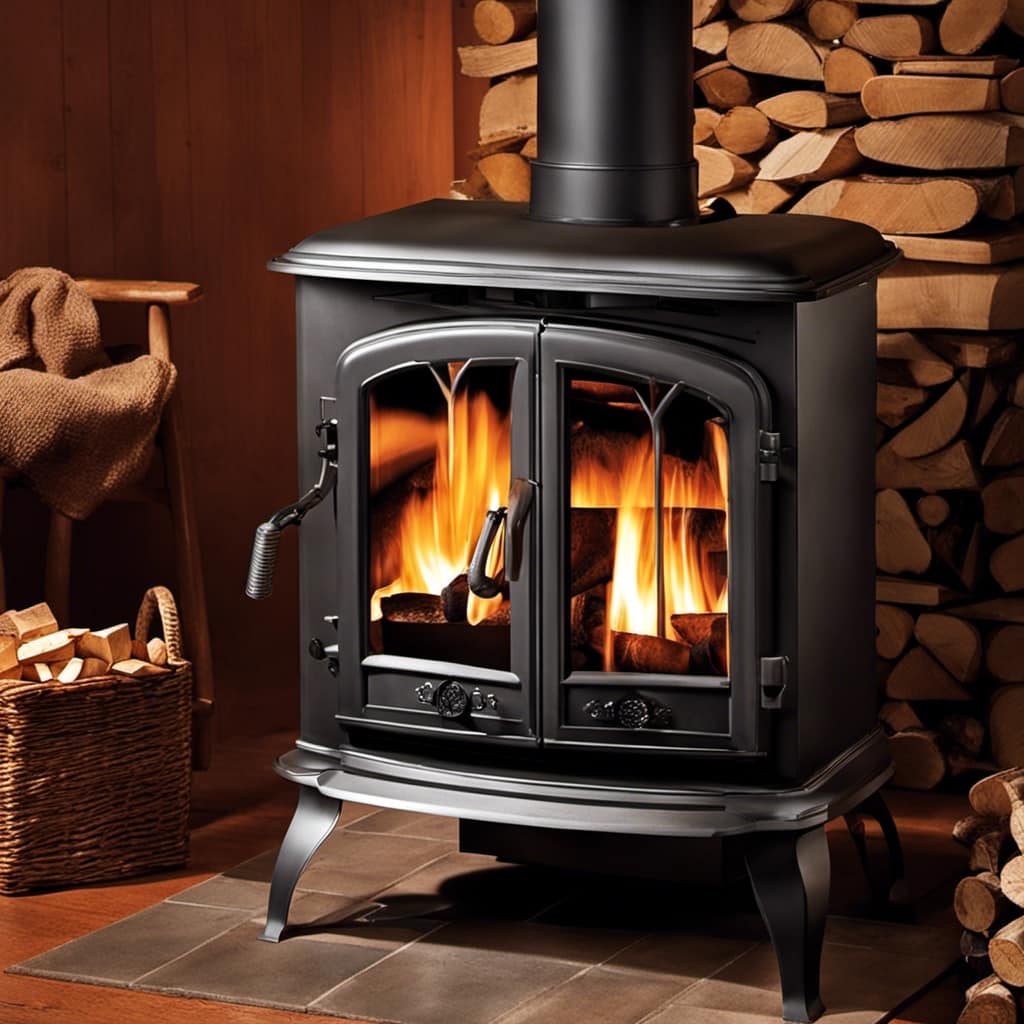
Efficiency: Look for a wood stove that’s highly efficient in terms of burning fuel and distributing heat. This will help save on fuel costs and ensure that the garage stays warm for longer periods of time.
Safety features: Safety should be a top priority when choosing a wood stove. Look for features like a built-in fireproof glass door, a secure latch, and an ash pan for easy cleaning. It’s also important to ensure that the wood stove meets all safety regulations and requirements.
Wood stove maintenance: Regular maintenance is crucial to keep the wood stove functioning properly and to prevent any potential hazards. This includes cleaning the chimney regularly, inspecting the stove for any signs of damage, and ensuring proper ventilation.
It’s important to note that wood stove regulations may vary depending on your location. Make sure to check with your local authorities to ensure compliance with any specific regulations or requirements.

Preparing Your Garage for Wood Stove Installation
To ensure a safe and efficient installation, I need to properly prepare the area where the wood stove will be placed. One of the crucial steps in preparing the garage for wood stove installation is ensuring proper garage insulation. This is essential to prevent heat loss and increase the stove’s efficiency. First, I’ll check the insulation in the garage walls and ceiling. If necessary, I’ll add or upgrade insulation to meet the recommended R-value for my climate zone. Additionally, I’ll seal any gaps or cracks in the walls and ceiling to prevent air leakage.
Next, I’ll focus on the chimney installation. It’s important to ensure that the chimney is properly installed to safely vent the wood stove’s exhaust gases. I’ll carefully choose the chimney location, considering factors such as proximity to combustible materials and clearance requirements. I’ll install the necessary chimney components, including the chimney pipe, thimble, and chimney cap.
Installing a Wood Stove in Your Garage: Step-by-Step Guide
One important consideration for a successful garage wood stove installation is choosing the right location for the stove. Here are four key factors to keep in mind when selecting the perfect spot:
Clearance: Ensure that the stove is positioned at least 36 inches away from any combustible materials, such as walls or furniture, to prevent fire hazards.

Ventilation: It’s crucial to have proper ventilation in the garage to ensure the safe operation of the wood stove. Install a vent pipe to direct the smoke and gases outside, away from the garage.
Accessibility: Place the stove in an area that allows easy access for maintenance and cleaning. This will help keep the stove in good working condition and extend its lifespan.
Heat Distribution: Consider the layout of your garage and position the stove in a location that allows for optimal heat distribution. This will ensure that the garage is heated evenly and efficiently.
Installing a wood stove in your garage offers several benefits. Firstly, it provides a reliable source of heat during cold winter months, allowing you to work comfortably in your garage. Additionally, it can help reduce heating costs by providing supplemental heat to your home. Lastly, having a wood stove in the garage can also serve as a backup heating option during power outages.

Ensuring Safety and Proper Ventilation for Your Wood Stove in the Garage
Ensuring safety and proper ventilation for my wood stove in the garage is essential for a successful installation. When installing a wood stove in your garage, it is important to consider garage insulation and fire safety precautions. Proper insulation will not only keep the garage warm during cold weather but also prevent heat loss, ensuring efficient operation of the wood stove. Additionally, fire safety precautions are crucial to avoid any potential hazards.
To help you understand the importance of these factors, here is a table outlining the key aspects of garage insulation and fire safety precautions:
| Aspects | Garage Insulation | Fire Safety Precautions |
|---|---|---|
| Insulation Types | Fiberglass batts, foam boards | Non-combustible materials, fire-resistant drywall |
| Insulation Installation | Properly sealed joints, covering exposed areas | Fire-rated barriers around the stove, clearance from combustible materials |
| Ventilation | Vented soffits, ridge vents, exhaust fans | Proper chimney installation, carbon monoxide detectors |
| Fire Extinguishers | ABC-rated extinguisher, easily accessible | Regular maintenance, training on usage |
| Smoke and Carbon Monoxide Detectors | Installed near the stove, tested regularly | Battery replacement, alarm functionality testing |
Frequently Asked Questions
Can I Install a Wood Stove in a Garage That Is Attached to My House?
Yes, you can install a wood stove in a garage that’s attached to your house. However, it’s important to take safety precautions when doing so.
Ensure that the stove is installed properly and meets all necessary codes and regulations. This includes proper ventilation, clearance from combustible materials, and a properly installed chimney.
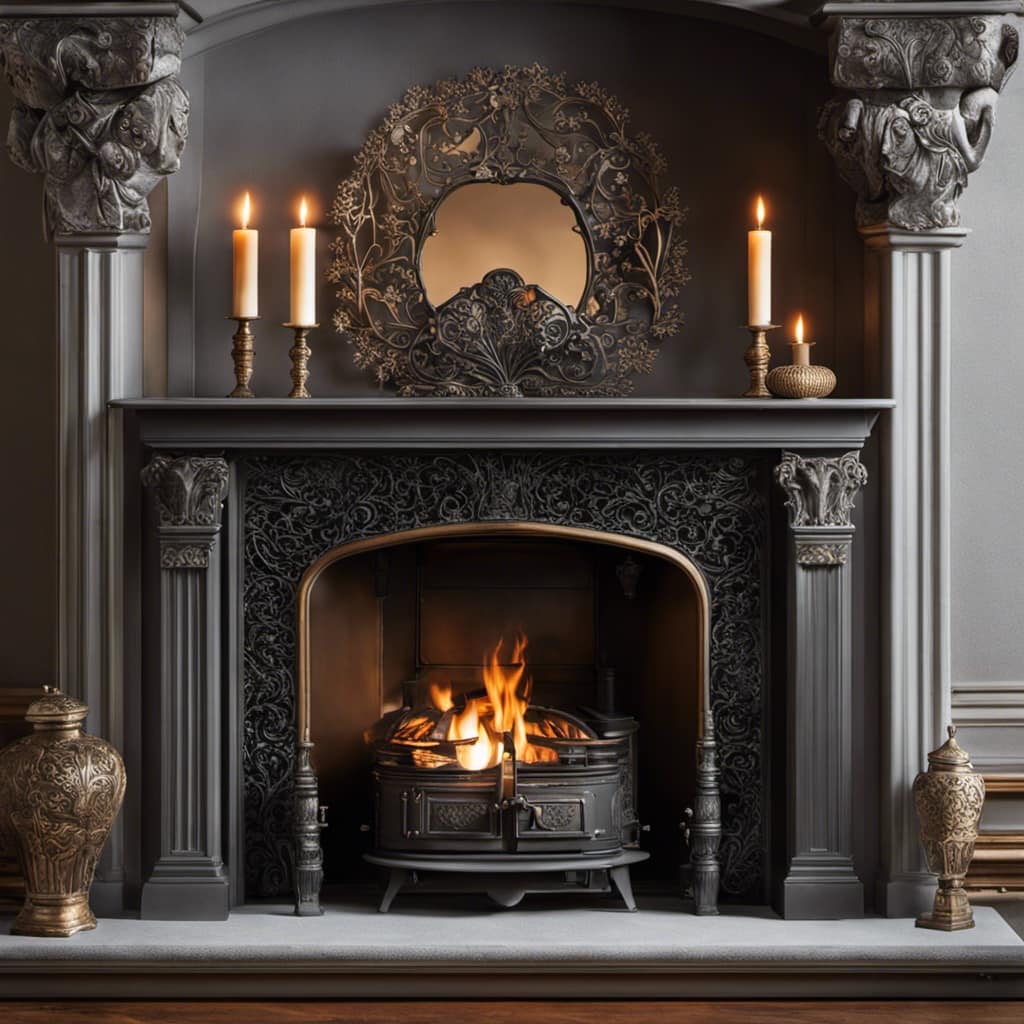
It’s also important to have a fire extinguisher nearby and to regularly maintain and clean the stove to prevent any potential hazards.
What Kind of Permits or Inspections Are Required for Installing a Wood Stove in a Garage?
Permits and inspections are crucial when installing a wood stove in a garage. The local building department will typically require you to obtain a permit before starting the installation process. This ensures that the stove is installed safely and in compliance with local regulations.
Additionally, inspections are conducted at various stages of the installation to ensure that it meets safety standards. It’s important to consult with your local building department to understand the specific permit and inspection requirements for your area.
Are There Any Special Considerations or Precautions I Need to Take if I Have a Metal Garage?
When installing a wood stove in a metal garage, there are some important safety precautions to consider.

Firstly, ensure that the stove is placed on a non-combustible surface, such as a concrete slab, to prevent any fire hazards.
Additionally, it’s crucial to provide proper ventilation to avoid the buildup of harmful gases.
Installing a carbon monoxide detector is also recommended to detect any potential leaks.
Lastly, always follow the manufacturer’s guidelines and consult with a professional to ensure a safe and efficient installation.

Can I Use a Wood Stove as the Primary Source of Heat in My Garage?
Well, let me tell you about using a wood stove for supplemental heat in a garage.
There are definitely some pros and cons to consider.
On the positive side, a wood stove can provide a cozy and rustic ambiance, and it can be a cost-effective way to heat your garage.
However, there are also some drawbacks. Wood stoves require regular maintenance and cleaning, and there can be safety concerns with proper ventilation and fire hazards.
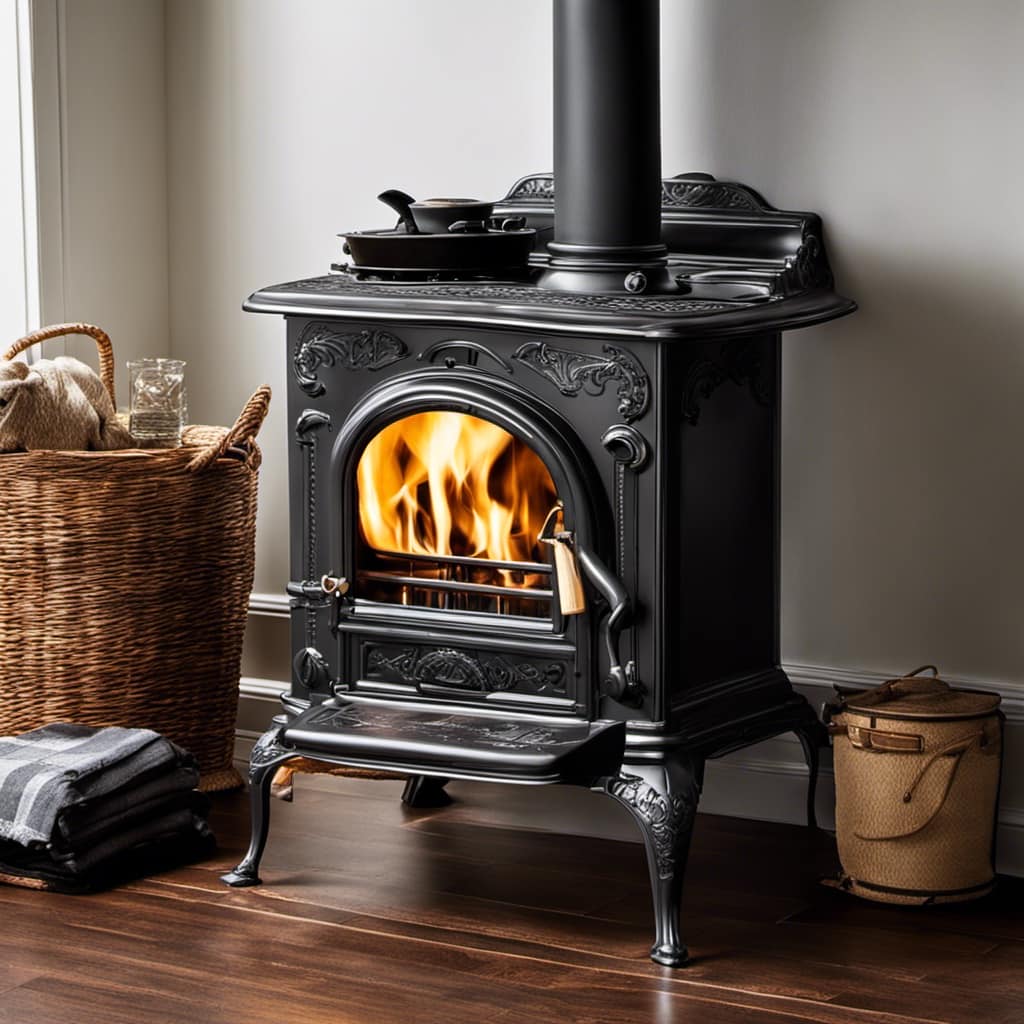
How Often Should I Clean and Maintain My Wood Stove in the Garage?
Cleaning and maintaining a wood stove is crucial for its optimal performance and safety. The cleaning frequency depends on the usage of the stove, but a general guideline is to clean it at least once a month during the heating season.
Regularly remove ashes, clean the stovepipe, and inspect the gaskets for any wear and tear. Additionally, ensure proper ventilation and check for any signs of damage.
Following these maintenance tips will help prolong the lifespan of your wood stove.
– Can a Wood Stove Smoke Curtain Assembly be used in a garage installation?
Yes, a wood stove smoke curtain assembly can be used in a garage installation to help control smoke and fire. It provides an extra layer of protection and can be a crucial safety feature in a garage where a wood stove is being used.
Conclusion
In conclusion, installing a wood stove in your garage can provide a cozy and efficient heating solution. By carefully assessing the suitability of your garage, choosing the right wood stove, and properly preparing and installing it, you can enjoy the warmth and comfort it brings.
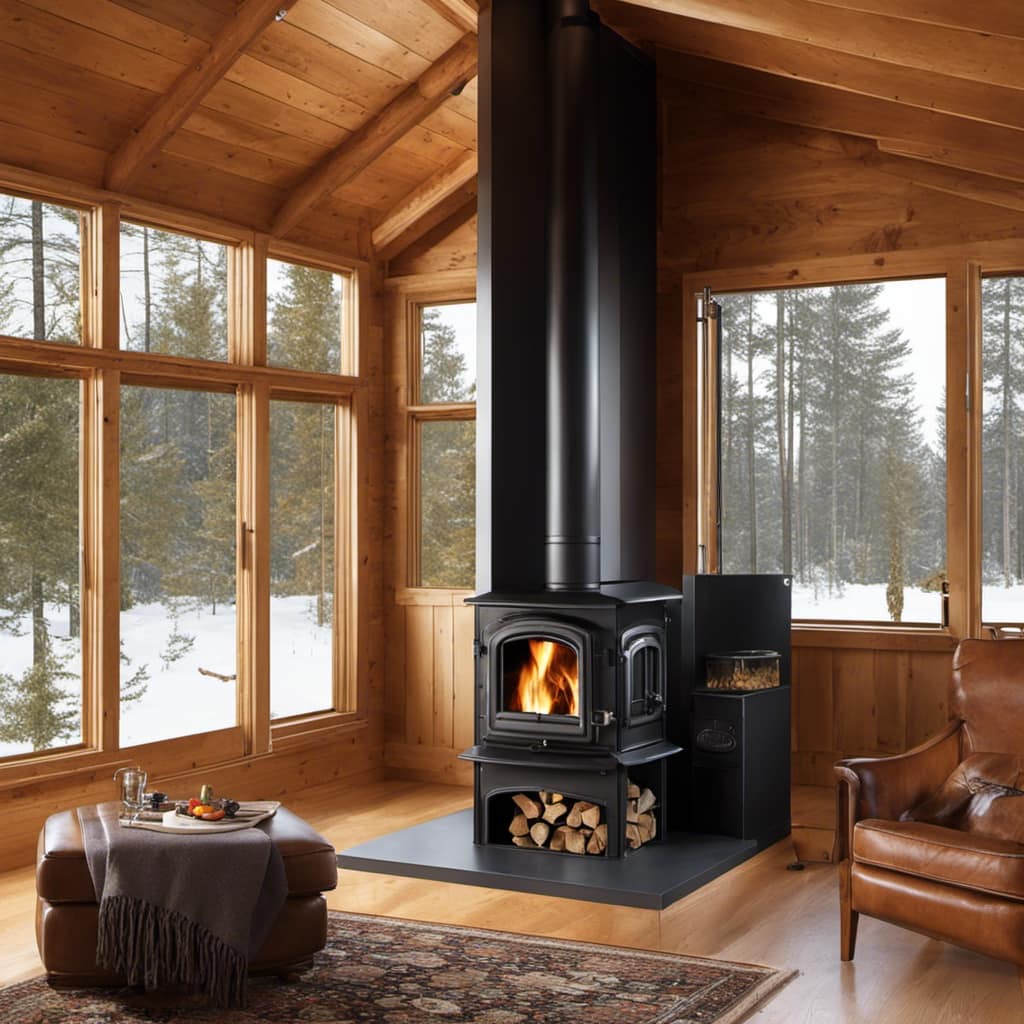
Remember to prioritize safety and ensure proper ventilation to prevent any potential hazards. With these steps in mind, you’ll be able to transform your garage into a welcoming space, where the phrase ‘where there’s smoke, there’s fire’ takes on a whole new meaning.
Growing up surrounded by the vast beauty of nature, Sierra was always drawn to the call of the wild. While others sought the comfort of the familiar, she ventured out, embracing the unpredictable and finding stories in the heartbeat of nature.
At the epicenter of every remarkable venture lies a dynamic team—a fusion of diverse talents, visions, and passions. The essence of Best Small Wood Stoves is crafted and refined by such a trio: Sierra, Logan, and Terra. Their collective expertise has transformed the platform into a leading authority on small wood stoves, radiating warmth and knowledge in equal measure.







